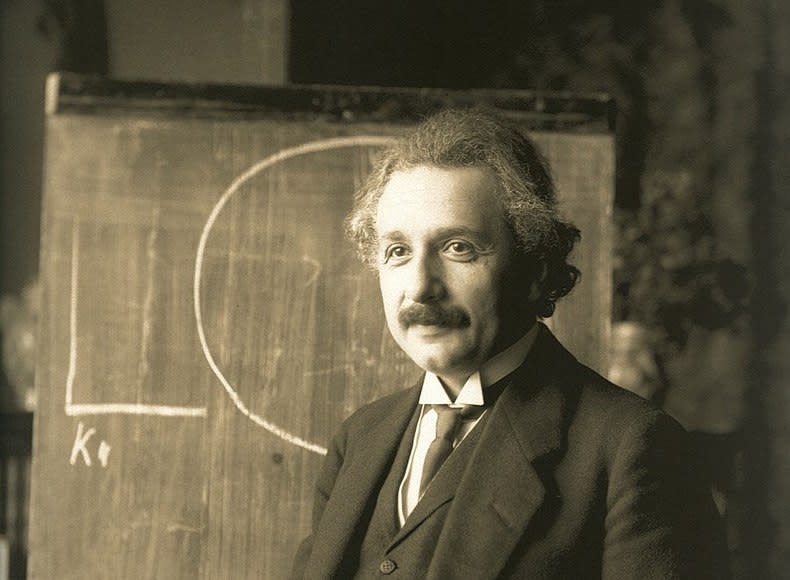Every Sherlock needs their Watson

Sherlock Holmes – Arthur Conan Doyle’s fictional detective – worked with his sidekick Dr Watson because Watson inspired his thinking as they talked through the latest mysterious crime.
But the notion of people inspiring others’ creativity isn’t only fictional.
When Albert Einstein published in 1905 his famous early paper on what would become his special theory of relativity, he didn’t cite any other papers, but included an acknowledgement to his colleague, Michele Besso.

Einstein credited his friend Michele Besso with making several valuable suggestions.
Einstein wrote that: “my friend and colleague Michele Besso steadfastly stood by me in my work on the problem discussed here, and that I am indebted to him for several valuable suggestions”.
Besso wasn’t the genius behind the paper, but had contributed to Einstein’s creative thinking process.
Organisations are full of people like Watson and Besso and in management research we call them “creativity catalysts”.
They are important organisational actors because they can inspire other’s creativity. They do this by giving advice, feedback and information, and by emotionally supporting their colleagues.
So, what makes a creativity catalyst? How do you identify them? And can you have too much of a good thing?
To answer these questions we studied creativity catalysts in two architecture companies based in Turkey. We focused on examining the catalytic relationships between the employees who are expected to be creative at work, surveying 127 employees on the creativity, while also asking their supervisors to evaluate their creative performance.

“Catalysts” can provide “creatives” with important advice, information and feedback.
Our research found that that best creativity catalysts in organisations had three key characteristics.
Firstly, a good catalyst tends to have a strong relationship with the creative in order to better contribute to their colleague’s creative thinking process. This makes sense – a strong relationship is what motivates the catalyst to invest the time needed to help the creative, while a creative is likely to take more notice of the view of someone with whom they have a strong relationship.
Secondly, if the catalyst is also in the same social circle as the creative, their contribution tends to be stronger. This certainly appears to have been the experience of the 18th century impressionist painters who fed off a close friendship circle.
The likes of Claude Monet, Frederic Bazille, Pierre-Auguste Renoir and Camille Pissarro all painted in the same studio together and met up in Parisian cafes with other artists like Edgar Degas, Édouard Manet and Émile Zola.
During these meetings, they exchanged ideas and contributed to each other’s artistic styles, acting as creativity catalysts to each other. This process was facilitated by them all sharing the same artistic language and norms, enabling them to understand each other well.
Thirdly, we found that if the catalyst is also a creative individual, their contribution is even stronger.
A catalyst who is creative can give not only generic feedback and advice, but can also specifically engage in the creative process with their colleague and try to improve it.
However, despite the important role of creativity catalysts within organisations, we did find that you can have too much of it. Specifically, we found that depending on the level of input, having catalytic contributions from more than five colleagues starts to become detrimental.
The reasons are likely twofold.
First, receiving excessive levels of informational help from catalysts can create information overload and, as a result, the creative cannot process all the information and becomes distracted.

Too much “catalytic support” can be counterproductive.
Second, it’s possible that receiving excessive levels of emotional support from the catalysts might lead the creative to think that an underdeveloped or weak idea is a good one. As a result, they might pursue a mediocre idea.
While it is important for creatives to understand the role catalysts can play in fostering their own creativity, managers should also be aware of and support these catalysts whose contribution is often otherwise overlooked in an organisation.
For example, managers can encourage and support employees taking on a creativity catalyst role by developing an organisational culture where all employees feel part of each other’s creative process.
In this way, organisations can become more innovative.
The co-founder of Pixar Animation Studios, Ed Catmull, always encourages employees to show each other their work in order to learn from and inspire each other.
However, managers also should be aware that excessive levels of catalytic contribution could be detrimental for creative performance. So, providing time and a space where employees can work individually and focus on their own creative process is an essential balancing measure.
This article was published by Pursuit.
Gamze Koseoglu is a senior lecturer in the Department of Management and Marketing at the University of Melbourne Her research focuses on the role of social networks, leadership, and team processes on creativity.












